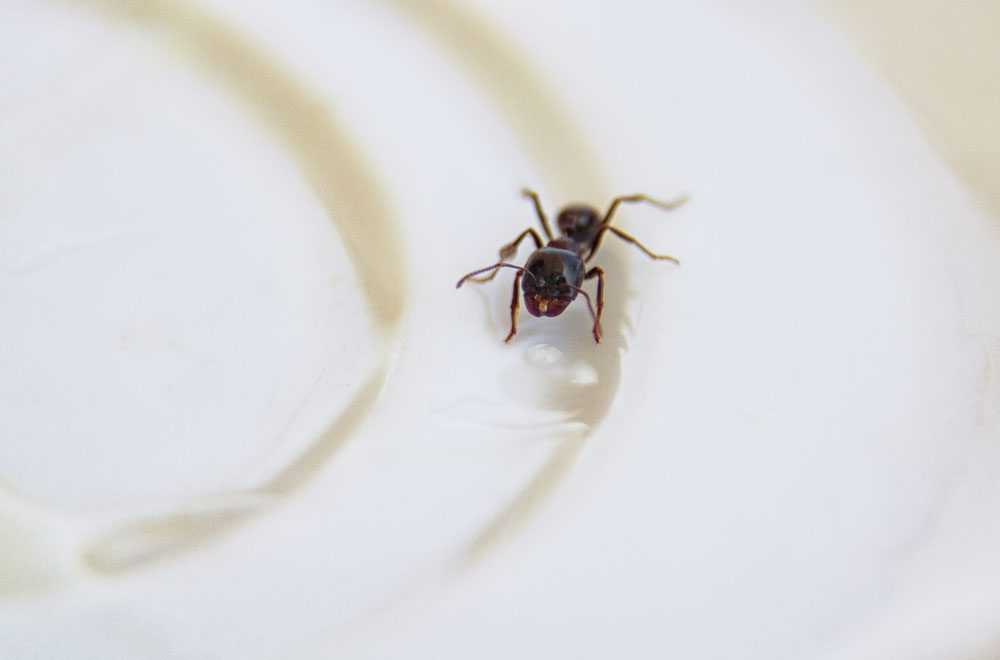Moisture Ant Identification and Habitat
Moisture ants get their name from their love of living in damp humid environments. Often homeowners become aware that they have a moisture ant infestation during a remodel as these ants love to live in damp humid spots behind walls, or by finding a frothy like substance that is being pushed out between wall seams.
Moisture ants are common here in Oregon and Washington due to our abundance of moisture and our relatively temperate climate which creates moisture and humid rich environments for these ants to thrive in. Outdoors, moisture ants prefer moisture rich soil and rotting damp wood. It is also not uncommon for these ants to build colonies next to home foundations, which can introduce these pests to your home leading to infestations if your home has too much humidity or has rotted moist wood.
Moisture Ants or Carpenter Ants?
Moisture ants can sometimes be confused with carpenter ants. Many homeowners misidentify them based upon these ants building their homes in rotted or dead wood. Often moisture ants are called “yellow ants” due to their yellow tinted color, which is different from carpenter ants colors of black or brown.
Dealing with a moisture ant infestation can be a time-consuming and sometimes expensive process. To get rid of these ants, you will need to remove the reason they came to your home in the first place. Consulting with an experienced pest control company that is trained in ant identification can help to ensure that you have a moisture ant problem and not a carpenter ant infestation.
Getting rid of moisture ants
The remedy starts with identifying where the moisture in your home is coming from. Here in Portland and Vancouver leaking roofs, basements, plumbing and foundation / crawl space drainage problems can all lead to introducing moisture and humidity to your home. Dirt and overgrown shrubs that come into contact with your homes wood is also another common problem that accelerates wood decay as well as introduces moisture to your home. Getting rid of excessive moisture in your home is the first step to ridding your home of a moisture ant infestation.
Once the moisture problem has been rectified in your home, finding the areas the moisture ants have colonized and in some cases exterminating these areas may the next step. Hiring an experienced pest control company can help you identify areas infested with moisture ants.
Chemical Control of Moisture Ants
These ants are ecological indicators of a moisture problem. To eliminate them only requires changing the environment (eliminating moisture). Chemical control is rarely advised unless they are nesting near or under the house and begin to be a nuisance. If this is the case, then chemical control may become necessary. There are a number of products on the market that homeowners can obtain to treat the nest site. If you cannot find the nest or if it is located in an inaccessible place (such as a narrow crawl space), you may wish to consult a pest management professional.
Finally, once the moisture ants have been safely removed, the rotted wood must be replaced to ensure there is no re-infestation in the future.Source: Washington State University
Moisture Ant Treatment & Extermination
Because treatment for moisture ants and carpenter ants is so different, it is wise to hire a reputable pest control company to ensure you know what you’re dealing with. Knowing what you’re up against, as well as having a sound plan to deal with these unwelcome pests, will make sure you get rid of these ants the first time, and for good. Call PURCOR today for a free quote!
"*" indicates required fields
"*" indicates required fields




